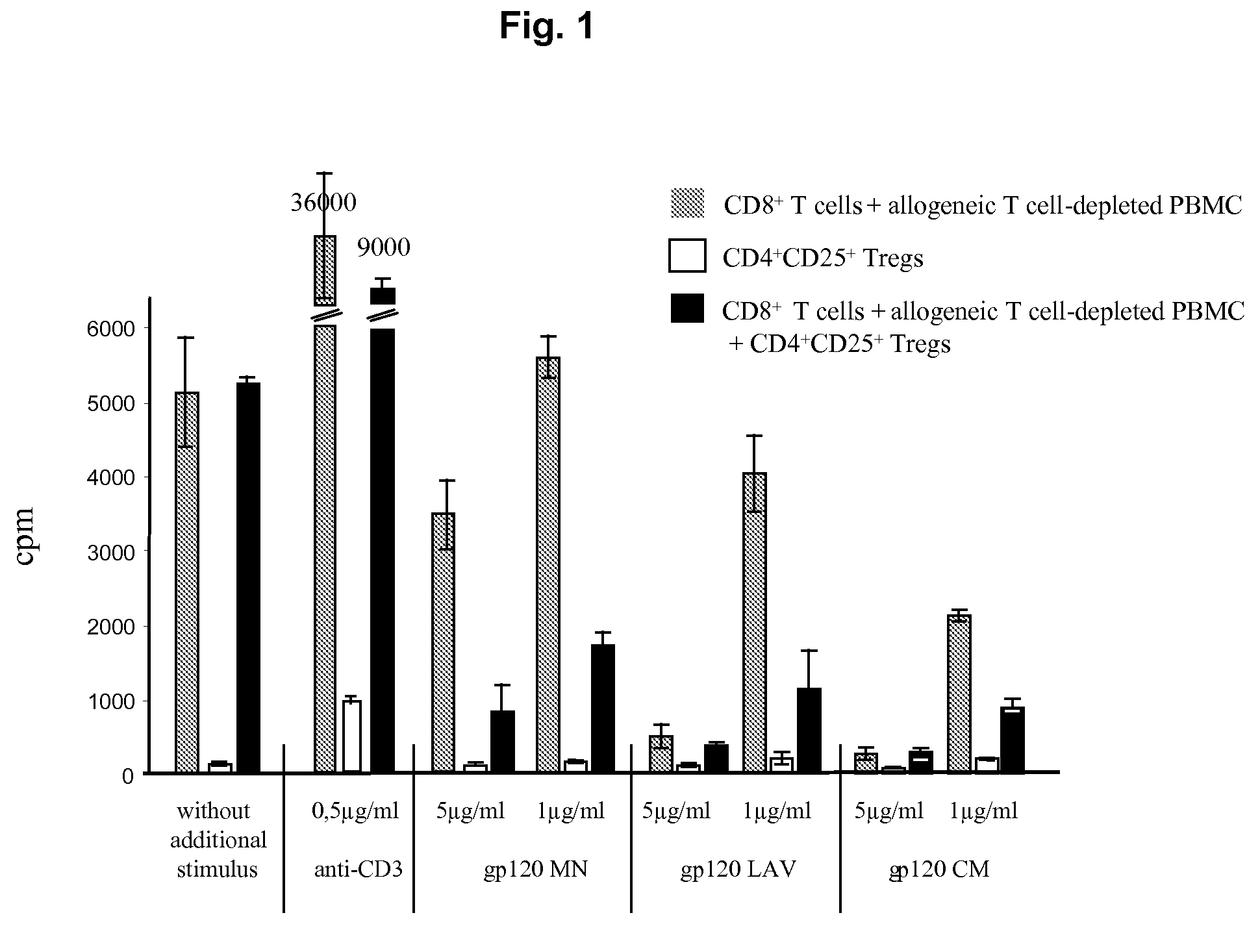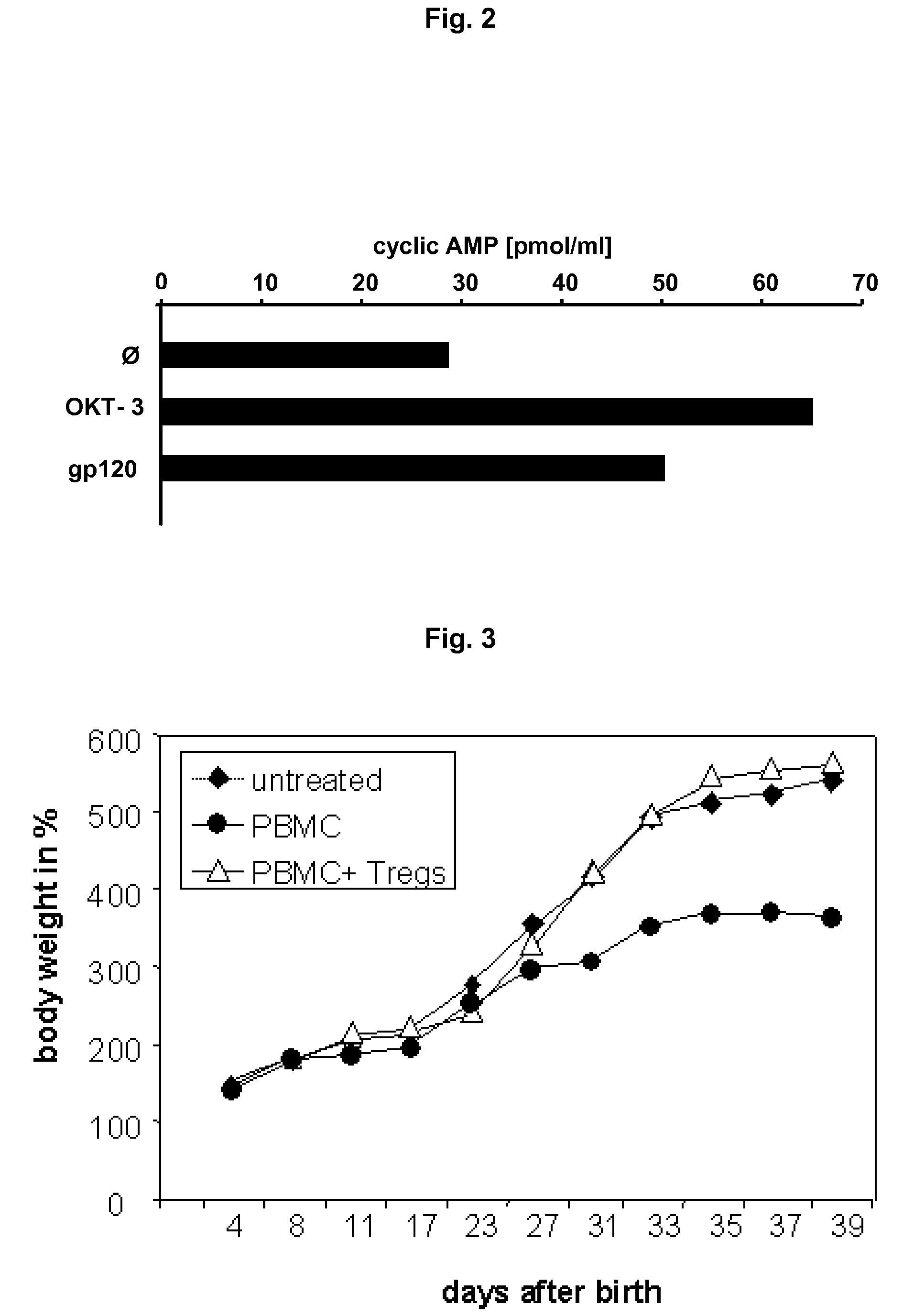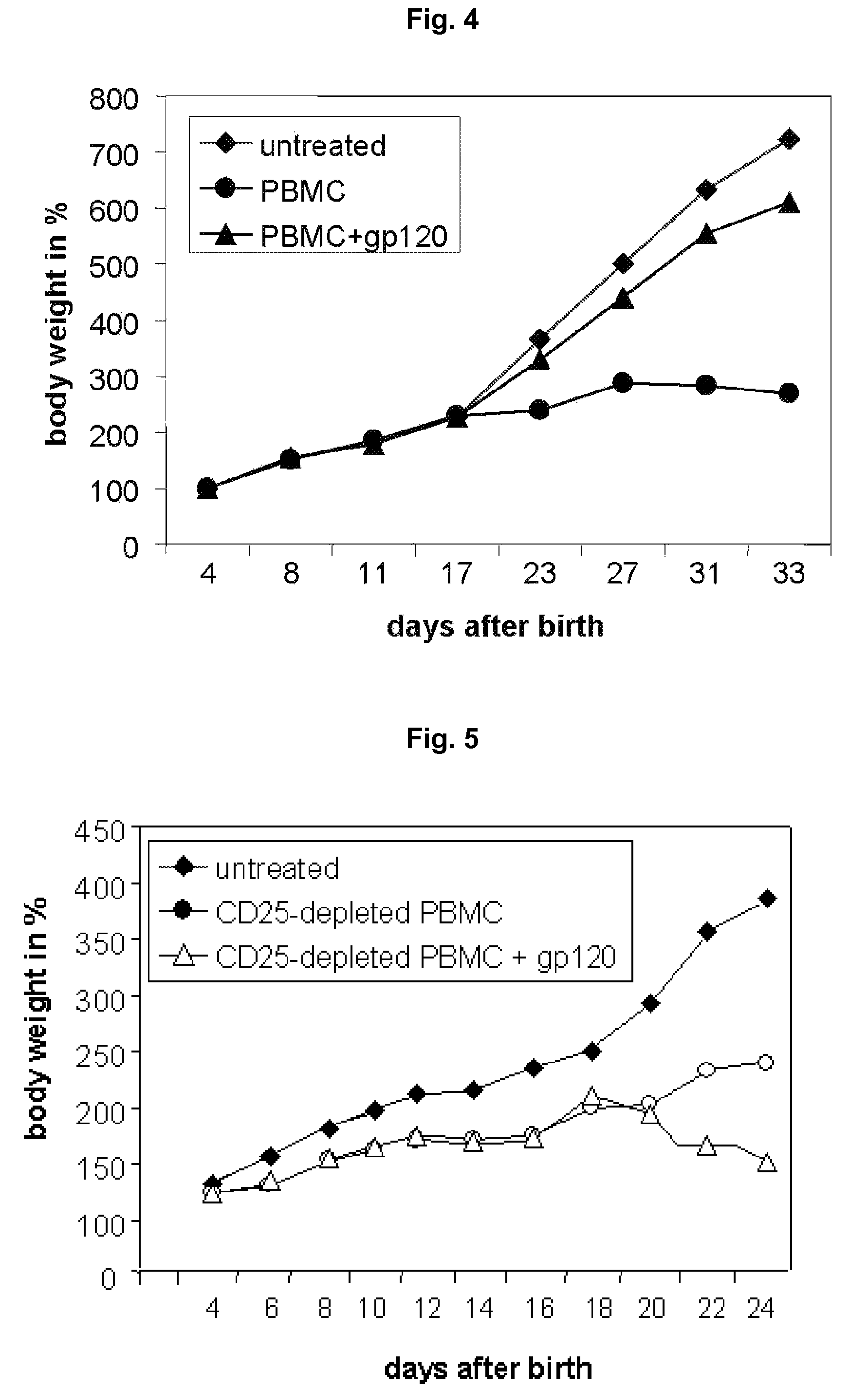Screening method for the identification of agents capable of activating CD4+CD25+ regulatory T-cells through interactions with the HIV-1 GP120 binding site on CD4
a technology of cd25+ and cd4+, which is applied in the field of screening methods for the identification of agents capable, can solve the problems of high cost and laborious procedures, difficult to achieve high purity of treg cells, and misdirected and uncontrolled effector t cell activity
- Summary
- Abstract
- Description
- Claims
- Application Information
AI Technical Summary
Benefits of technology
Problems solved by technology
Method used
Image
Examples
examples
(1) CD4 / HIV-1 gp120 Competition Assay for Determining Whether a Substance can Bind at Least to a Peptide Spanning Epitope as Set Fourth in SEQ ID NO.:1
[0083]96 well assay plates (Nunc, Germany) are coated overnight at 4° C. with CD4 (sCD4, Immunodiagnostics, USA) 100 ng per well in PBS, pH 7.4. Coated plates are saturated with PBS / 3% BSA buffer and washed three times. To determine binding of a test substance sample is added for 1 hour in different concentrations. No test substance is added to control wells. After washing three times HIV-1 gp120-peroxidase conjugate (Immunodiagnostics, USA) is added to the plate for 1 h. Unbound HIV-1 gp120-peroxidase conjugate is removed by washing three times After washing, 3,3,5,5-tetramethylbenzidine chromogen substrate (Pierce, USA) for peroxidase is added and the optical density is read at 450 nm. A substance which interacts with the CD4 HIV-1 gp120-binding site will block the binding of labeled HIV-1 gp120 and is identifiable by a reduced sign...
PUM
| Property | Measurement | Unit |
|---|---|---|
| concentrations | aaaaa | aaaaa |
| concentrations | aaaaa | aaaaa |
| radioactivity | aaaaa | aaaaa |
Abstract
Description
Claims
Application Information
 Login to View More
Login to View More - R&D
- Intellectual Property
- Life Sciences
- Materials
- Tech Scout
- Unparalleled Data Quality
- Higher Quality Content
- 60% Fewer Hallucinations
Browse by: Latest US Patents, China's latest patents, Technical Efficacy Thesaurus, Application Domain, Technology Topic, Popular Technical Reports.
© 2025 PatSnap. All rights reserved.Legal|Privacy policy|Modern Slavery Act Transparency Statement|Sitemap|About US| Contact US: help@patsnap.com



